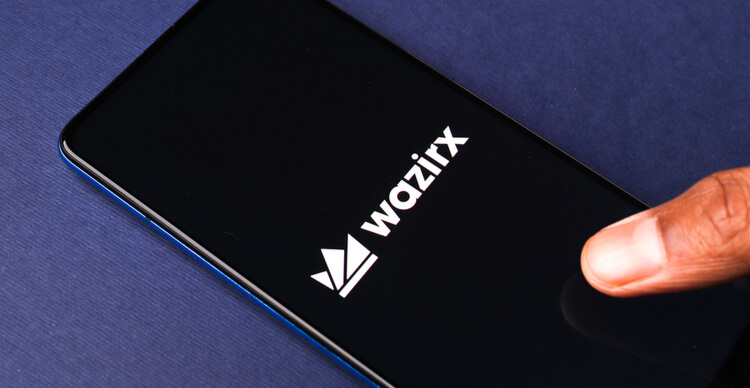The Graph, also known as GRT, was initially launched in 2018 on the Ethereum blockchain. GRT is an open-sourced software that aims to simplify data retrieval by collecting, processing, and storing data from different blockchain applications. GRT is the native token of The Graph and is used to pay for viewing subgraphs.
What is The Graph?
GRT is a decentralized protocol aimed at index and querying data from blockchains. GRT for blockchains is like Google for the web. GRT indexes blockchain data from networks like Ethereum and Filecoin, just like Google indexes the web. GRT helps decentralized applications (DApps) to increase their efficiency.
When it comes to finality, reorganization, and query fulfillment security, DApps face serious problems. The Graph intends to solve these problems.
The Graph analyzes and gathers blockchain data. GRT then stores the data collected into open APIs, called subgraphs.
DApps use a language initially created by Facebook, called GraphQL, to send queries to the Graph. The APIs or subgraphs let any application send a request to its protocol and receive an immediate response concerning the sent query. However, GRT founders have promised to decentralize this process.
The original cryptocurrency of the Graph, called GRT, ensures the integrity of the data secured in Graph’s network. Different users of GRT, such as indexers, curators, or delegators, stake GRT to fulfill their roles. These users receive fees from the network in return for staking their GRT assets.
According to the Graph creators, before GRT, “teams had to develop and operate proprietary indexing servers. This required significant engineering and hardware resources and broke the important security properties required for decentralization.”
Many DApps such as Ave, Curve, and Uniswap use the Graph. So, if you want to invest in GRT too, you can click here to start trading it right now.
The Graph: Roots and History
Yaniv Tal, Jannis Pohlmann, and Brandon Ramirez founded the Graph in 2018. GRT founders had previously worked on many startups together concerning developer tools.
Yaniv Tal, co-founder and CEO of The Graph, and his team had first-hand experience in developing Ethereum blockchain applications and knew how hard it was to develop them.
Using their experience on the subject Tal and his team found out that there was no decentralized indexing querying software for blockchain. Consequently, before GRT, developers had to find a way of their own to collect and transform data from various sources. So, Tal and his team tried to develop applications that do not require servers and make Web3 accessible to everyone.
The Graph raised $19.5 million since 2019 in token sales. The interest in GRT continues to grow as institutional attention grows toward decentralized finance. $10 million of the sales was raised since October 2020 in the token’s public sale. Since then, about 21% of the initial token supply of GRT has been sold to investors such as Coinbase Ventures, Digital Currency Group, and Multicoin Capital.
How does The Graph Work?
GRT uses “Subgraph Manifesto” to index data from the Ethereum blockchain. Subgraph Manifesto refers to the subgraph description containing data concerned with smart contracts, blockchain events, and the process of mapping event data together before it is all stored in the platform’s database.
New data is created when decentralized applications add data to the Ethereum blockchain while using smart contracts. The new data fed to the ETH blockchain, including transactions, subgraph manifests, and other data types, follow a certain structure. This data holds a record of all events and transactions right until they reach their finality point. At this point, The Graph Node, which is responsible for scanning the whole blockchain database, looks to collect the new data, filter them and send them to the relevant subgraphs.
GraphQL language bridges the Ethereum blockchain and the decentralized applications that send queries to The Graph.
After The Graph Node extracts the information, three types of users organize the data in its protocol.
Consumers—Whoever pays Indexers to use The Graph and its services.
Indexers—These are operators of graph nodes who stake GRT and get paid whenever a query is processed.
Curator—They use GRTs to determine which subgraphs should be indexed based on their value.
Delegator—Other stakers delegate their GRT to existing indexers and earn a portion of the profit without running nodes themselves.
Fishermen—They ensure the correctness of the responses from the network to queries.
Arbitrator—They decide whether an indexer is malicious or not.
Why Choose The Graph?
The GRT derives its value from successfully running and executing smart contracts depending on The Graph protocol. Also, GRT is the only cryptocurrency used for indexing data and critical network operations in the crypto world.
The GRT is one of the cryptocurrencies in which anyone can vote and participate in decision-making affecting the software by investing and staking GRT.
Initially, The Graph introduced 10 billion GRT in 2020. The total supply of the GRT will increase by an average of 3% annually. Also, 1% of the tokens will be removed from circulation each year.
All this shows great promise regarding the future of the GRT, so it seems it is worth it to allocate a part of your portfolio to it. Then what are you waiting for? Bitunivex provides you with GRT. Click here to buy some.




